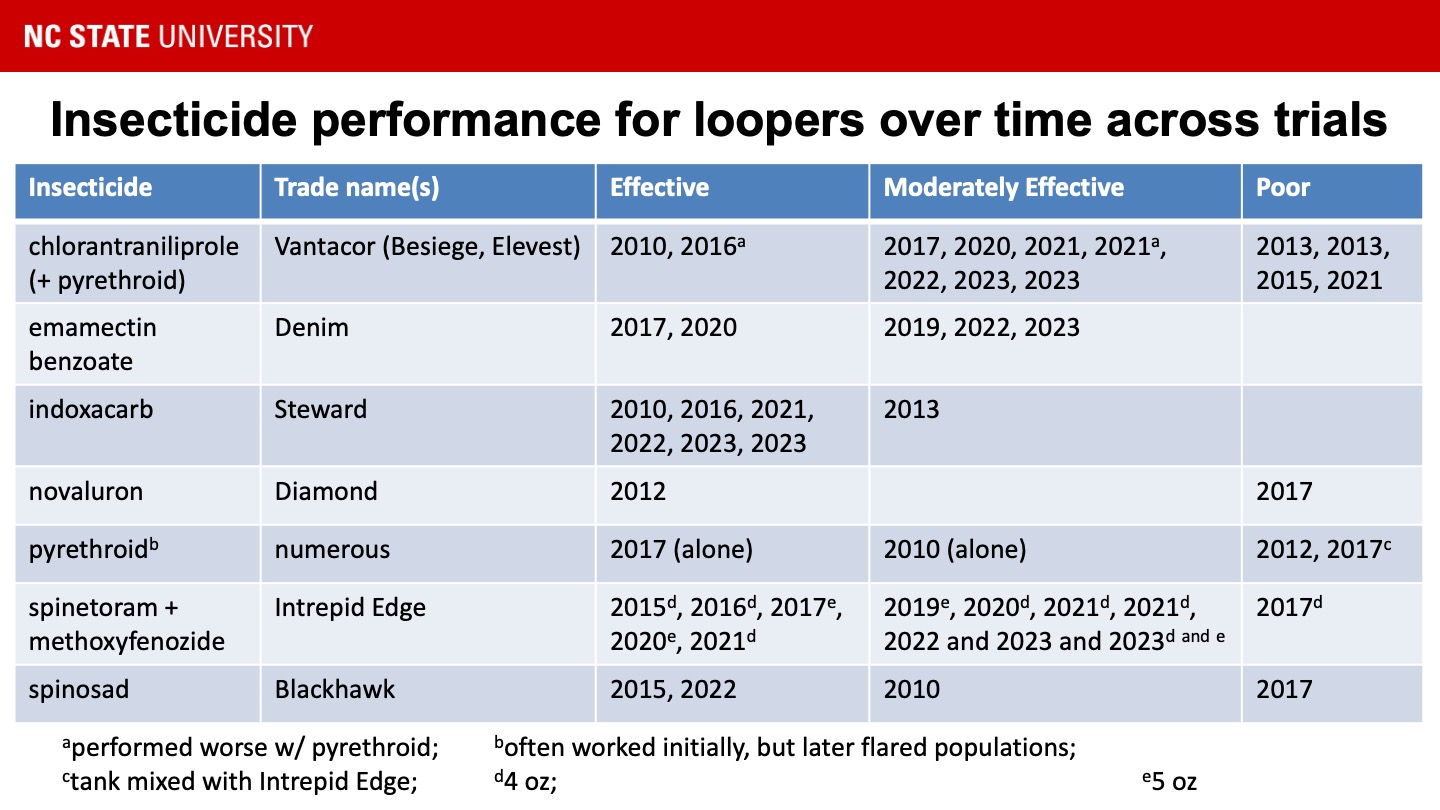Don’t Give Up Scouting Soybeans- Soybean Loopers and Stink Bugs Are Abundant
go.ncsu.edu/readext?1025513
en Español / em Português
El inglés es el idioma de control de esta página. En la medida en que haya algún conflicto entre la traducción al inglés y la traducción, el inglés prevalece.
Al hacer clic en el enlace de traducción se activa un servicio de traducción gratuito para convertir la página al español. Al igual que con cualquier traducción por Internet, la conversión no es sensible al contexto y puede que no traduzca el texto en su significado original. NC State Extension no garantiza la exactitud del texto traducido. Por favor, tenga en cuenta que algunas aplicaciones y/o servicios pueden no funcionar como se espera cuando se traducen.
Português
Inglês é o idioma de controle desta página. Na medida que haja algum conflito entre o texto original em Inglês e a tradução, o Inglês prevalece.
Ao clicar no link de tradução, um serviço gratuito de tradução será ativado para converter a página para o Português. Como em qualquer tradução pela internet, a conversão não é sensivel ao contexto e pode não ocorrer a tradução para o significado orginal. O serviço de Extensão da Carolina do Norte (NC State Extension) não garante a exatidão do texto traduzido. Por favor, observe que algumas funções ou serviços podem não funcionar como esperado após a tradução.
English
English is the controlling language of this page. To the extent there is any conflict between the English text and the translation, English controls.
Clicking on the translation link activates a free translation service to convert the page to Spanish. As with any Internet translation, the conversion is not context-sensitive and may not translate the text to its original meaning. NC State Extension does not guarantee the accuracy of the translated text. Please note that some applications and/or services may not function as expected when translated.
Collapse ▲I call the first week of September looper week, and this year has not disappointed. Soybean loopers cannot overwinter in North Carolina and migrate yearly from the south. The adults show up in late August and lay eggs that develop into larvae that feed on soybean leaves in early September. This recent article details their biology, why they are frustrating to control, and some insecticide recommendation.
Here is an updated table of efficacy. More consistently effective options include Blackhawk, Denim, Intrepid Edge, and Steward.
Soybean loopers tend to be more common in coastal counties. However, this year, soybean loopers are being reported at high numbers in areas well into the Coastal Plain.
Yield loss from leaf feeding can occur into R6 (full seed), and numbers will vary from field to field. Be sure to check any soybeans that are still forming pods or filling seeds. Looper larvae prefer older leaves and will be in the bottom of the canopy, so be sure to inspect the canopy thoroughly. Our threshold is 15% defoliation throughout the entire canopy in the reproductive stages. However, you can tolerate even more defoliation than that into R6 without yield loss.
Stink bugs have not been abundant in most field crops across the state here, except in localized areas and historical hot spots. However, they will now start to increase population in soybeans through October, and should be scouted and treated if necessary.
Soybeans are especially vulnerable to stink bug feeding in R4 (full pod) and R5 (beginning seed). These are critical stages for treatment. You can tolerate more stink bug feeding during R6, and they won’t cause yield loss in R7 (one pod on the plant turning color), although they can decrease seed quality. Use these thresholds for treatment. Pyrethroids work well for brown marmorated stink bug, green stink bug, and southern green stink bug. Bifenthrin (also a pyrethroid) is the best choice for brown stink bug.



